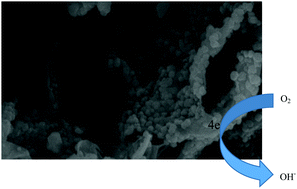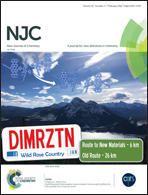Nitrogen/sulfur dual-doped reduced graphene oxide supported CuFeS2 as an efficient electrocatalyst for the oxygen reduction reaction†
Abstract
At present, low-cost and efficient electrocatalysts for accelerating the oxygen reduction reaction in fuel cells are highly desired. In this work, we report a facile approach to fabricate nanostructured CuFeS2 that is supported on nitrogen/sulfur dual-doped reduced graphene oxide (NS-rGO). The chemical composition and surface morphology of CuFeS2/NS-rGO are characterized using X-ray diffraction, X-ray photoelectron spectroscopy, scanning electron microscopy and transmission electron microscopy. Cyclic voltammetry, linear sweep voltammetry and chronoamperometry are used to evaluate the electrochemical activity and durability of the CuFeS2/NS-rGO catalysts in alkaline media. CuFeS2/NS-rGO-2 (CuFeS2/GO theoretical mass ratio is 2.8) shows much superior methanol tolerance and better stability than the commercial Pt/C catalyst. The catalyzed reaction follows a desirable four-electron pathway in alkaline electrolytes. Therefore, CuFeS2/NS-rGO-2 can be used as a promising low cost nonprecious metal electrocatalyst for fuel cells and metal–air batteries in future.



 Please wait while we load your content...
Please wait while we load your content...